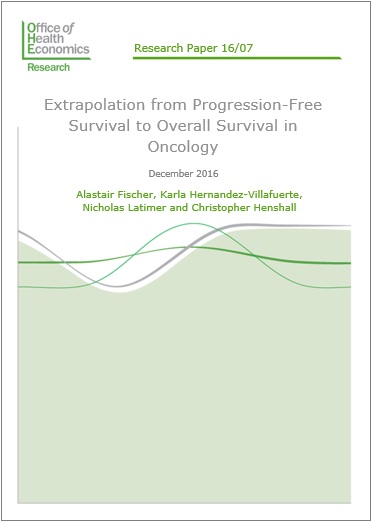Sign up to our newsletter Subscribe
Analysing Global Immunisation Expenditure

This Research Paper reports on a literature review of trials using PFS as a surrogate for OS in oncology between 2012 and 2016; a workshop and interviews involving people from a regulatory agency (EMA) a “payer” organisation (NICE), academics, and from the member…
This Research Paper reports on a literature review of trials using PFS as a surrogate for OS in oncology between 2012 and 2016; a workshop and interviews involving people from a regulatory agency (EMA) a “payer” organisation (NICE), academics, and from the member organisations comprising POI; and critiques of statistical modelling and economic analysis approaches to surrogacy.
Trials of drugs for cancer treatment may cause a reduction in tumour size for a period of time but might not extend life, or do so by a very small amount. Alternatively, there may be only a slight reduction in tumour size but a sustained response that allows for a long extension of life. It is the change in length of life or overall survival (OS) that is regarded as the most important outcome, but this in-formation is often not available for some years. However, if the length of time that the tumour is not growing (called progression-free survival, or PFS) is highly correlated with OS, information about the size of OS can be inferred using PFS. This may allow an effective drug to come onto the market sooner, which is in the interests of both patients and drug manufacturers. PFS is thus an example of what is known as a surrogate endpoint. The question of interest is thus whether the advantages of faster adoption of the drug outweigh the disadvantage that the surrogate outcome might not measure OS sufficiently accurately.
A revised version of this paper has been published in the International Journal of Technology Assessment in Health Care and can be downloaded from: https://www.cambridge.org/core/journals/international-journal-of-technology-assessment-in-health-care/article/challenges-and-methodologies-in-using-progression-free-survival-as-a-surrogate-for-overall-survival-in-oncology/41F9683F2C5DFBE816373A3C5EFC83FE
Please cite as: Hernandez-Villafuerte, K., Fischer, A., and Latimer, N. 2018. Challenges and Methodologies in Using Progression Free Survival as a Surrogate for Overall Survival in Oncology. International Journal of Technology Assessment in Health Care, 34(3), pp.300-316.
Extrapolation from Progression-Free Survival to Overall Survival in Oncology
